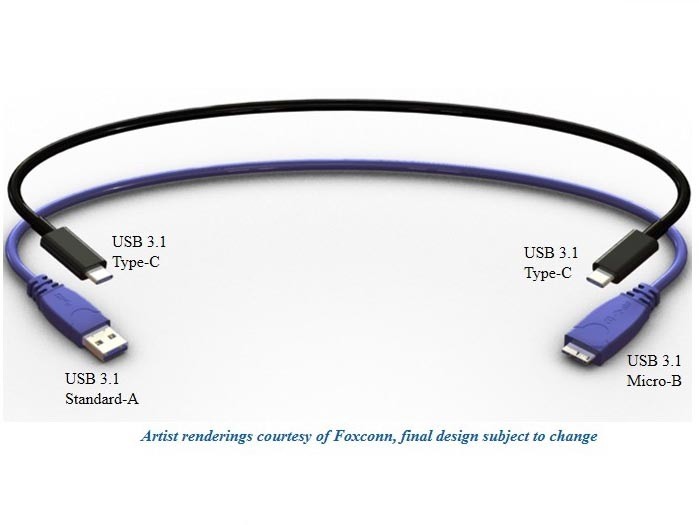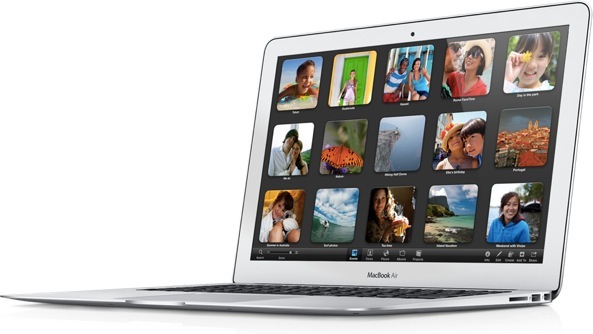Apple in late-2012 debuted the then new Lightning I/O as a replacement for the aging, decade-old 30-pin Dock connector. One of its most compelling features: the symmetrical design allowing the cable to be inserted with either side facing up.
I reckoned at the time that the industry would scramble to replicate Apple’s innovation. Sure enough, the USB 3.0 Promoter Group last December unveiled a new USB Type-C specification with much smaller, twice as fast connectors and cables.
You guessed right, USB Type-C is reversible so the new cables and connectors can be plugged in without worrying about the orientation. Leaked straight out of the world’s top contract manufacturer, Foxconn, the first renders give us a glimpse into the USB’s new Type-C, coming this July…
As pictured top of post, the proposed standard uses smart design where there’s no top or bottom as the plugs are symmetrical – that is, the same at both ends of the cable.
As reported by The Verge, USB Type-C is intended to replace both the regular USB and the smaller Micro USB with one universal standard. Featuring a markedly smaller footprint, the Type-C connector is similar in size to the existing USB 2.0 Micro-B.
In addition to up to 10Gbps bandwidth – twice as much versus the 5Gbps available on USB 3.0 – and the reversible design allowing you to plug in the cable without worrying about its orientation (again, much like Apple’s Lightning), USB Type-C supports scalable power charging thanks to between three and five amperes, up from 1.5A on USB 3.0.
Pictured above: a reference notebook design for USB Type-C connector.
And like Lightning, the much thinner design of USB Type-C (in the range of Apple’s Lightning cable size) will make possible even thinner smartphones, tablets, ultra-thin notebooks and so forth.
The bulkiness of the existing USB 3.0 and lack of advanced features are exactly the reasons why Apple couldn’t simply adopt USB 3.0 on iOS devices and instead had to engineer the tiny Lightning I/O.
However, due to the changed design of Type-C connectors and cables as, your existing USB plugs and receptacles won’t work with the new USB Type-C. Expect a whole cottage industry to blossom around new-to-existing cables and adapters.
The USB 3.0 Promoter Group says the connector design scales for future USB bus performance so Type-C ports and connectors should remain unchanged in the years to come.
The design and the full specifications should be finalized in July so expect to see USB Type-C implemented and adopted later in the year across a variety of devices and OEMs.
Apple’s Mac family currently uses USB 3.0.
If history is an indication, we expect Apple to eventually adopt the new Type-C plugs across its lineup, starting with Macs. Curiously enough, the Lightning-to-USB cable which ships with every iPhone, iPod touch and iPad still uses USB 2.0.
If Apple chooses to update the cable to use the emerging USB Type-C, it will be reversible on both sides, how cool is that?


